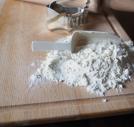Diagnosing Type 1 Juvenile Diabetes
It is estimated that 80,000 children and adolescents each year are diagnosed with juvenile diabetes. Juvenile diabetes is diagnosed when the body lacks beta cells and is, therefore, unable to produce insulin. This differs from type 2 diabetes, where the body can produce insulin but not in sufficient amounts, or where the body's cells lose their ability to accept insulin. Juvenile diabetes, also known as insulin-dependent diabetes, is now known as diabetes mellitus type 1 diabetes, T1D, or just type 1 diabetes.
Defining Type 1 Diabetes
Type 1 diabetes is an autoimmune disorder, where the patient's immune system sees the beta cells in the pancreas as a threat to the body, and attacks and destroys them. Why this happens is unknown. There is also another form of this disease that occurs not because of an autoimmune reaction, but because the pancreatic cells are destroyed by cystic fibrosis or injury or surgery to the pancreas. Because the destruction of these cells is secondary to another disorder, this form of diabetes is often referred to as secondary diabetes.
The loss of these cells means that the insulin needs of the patient must be met with insulin therapy throughout the rest of his or her life. Diet and exercise alone are not sufficient to treat this form of diabetes.
Diagnosing Type 1 Diabetes
Type 1 diabetes often develops abruptly, and generally affects only children and adolescents. Children can be born with the disorder, or it may appear later. Very often, the first indication that something is wrong is a sudden weight loss, despite adequate, or even increasing, nutrition. Infants and young children receive frequent screening by pediatricians, including charting weight and growth data, so this is likely to be caught during a well-baby or well-child checkup.
Another indicator for type 1 diabetes is ketoacidosis. This can represent an emergency situation for the patient. Ketoacidosis causes dry skin, abdominal pain, vomiting, rapid deep breathing, and drowsiness. Urine samples will contain high levels of ketones, which result from the breakdown of fatty tissue to produce energy, because cells cannot create energy without glucose, and cannot accept glucose in the absence of insulin.
Latent Autoimmune Diabetes in Adults (LADA)
Less commonly, type 1 diabetes does not appear until later in life. This form of diabetes is referred to as Latent Autoimmune Diabetes in Adults (LADA.) Often referred to as type 1.5 diabetes, this form of the disease is like type 1, in that the immune system attacks beta cells in the pancreas and destroys them. Unlike type 1, LADA is generally diagnosed in people over the age of 30.
Diagnosing diabetes in an adult can be tricky, because type LADA and type 2 diabetes can manifest similarly. Because the patient is older, the first diagnosis is generally type 2, particularly if the patient is overweight. However, LADA tends to progress faster than type 2, and tends to appear more often in patients at a healthy weight. Another difference is that the medications prescribed for type 2 patients tend to stop working much sooner in LADA patients.
Sources: Everyday Health, Diapedia
Photo: Pexels



































